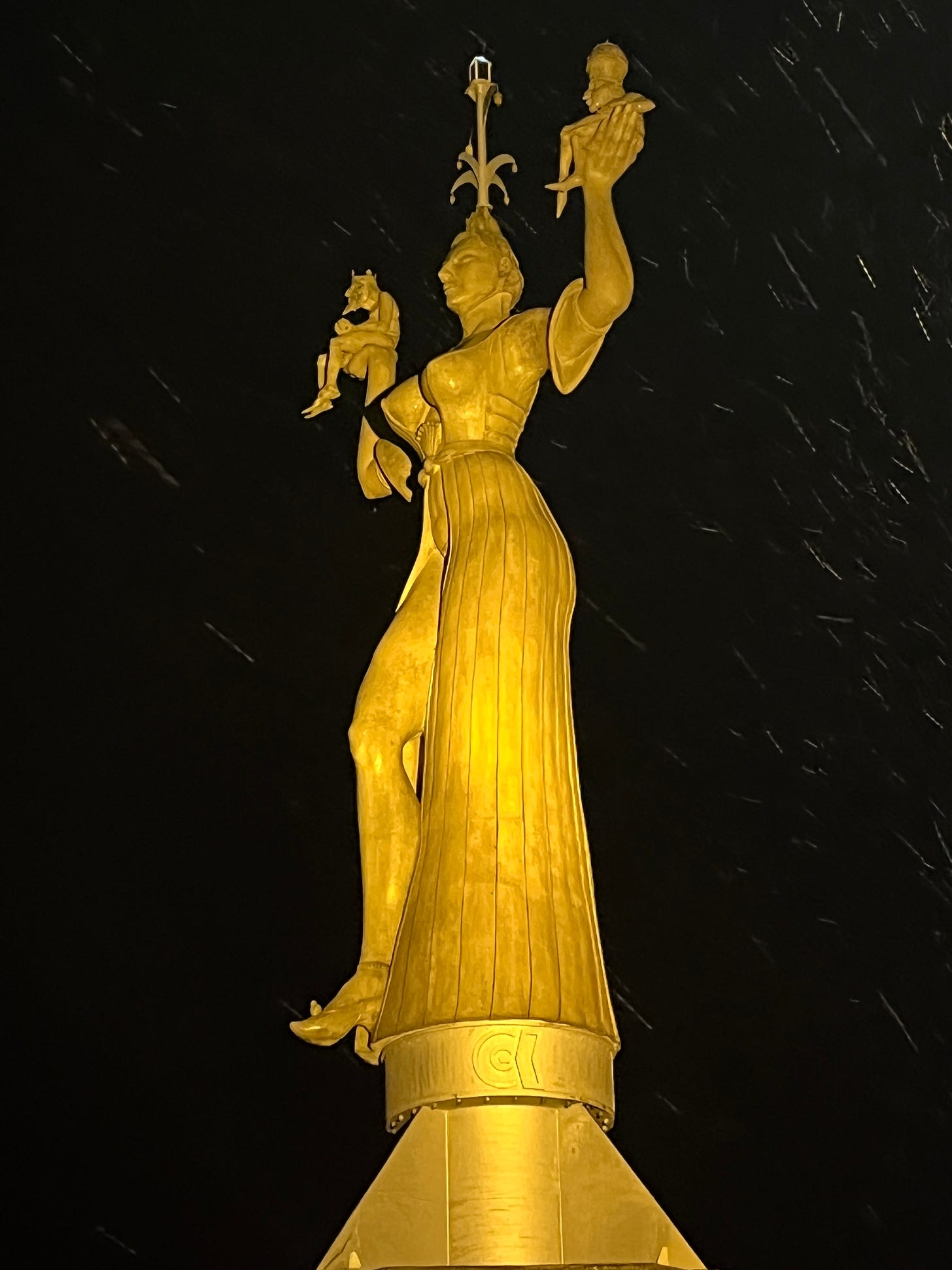Would we live in a less violent society if women were more powerful?
#268
My Dear Friend of Democracy,
In Konstanz on Lake Constance, a city of 83,000 inhabitants in the very south of Germany, an imposing female figure towers at the harbour entrance. 9 meters high, weighing 18 tons.
The so-called Imperia.
The statue, which rotates once every four minutes, depicts a voluptuous courtesan with a plunging neckline and a cloak that is only loosely fastened by a belt.
On her raised hands she carries two dwarfish naked men. The man on her right hand wears a king's crown on his head and holds an imperial orb; the figure on her left hand wears a papal tiara (traditionally worn by popes of the Catholic Church) and sits with his legs crossed.
You can read more about the background and history of the statue here.
When looking at the statue, even without any historical background, it becomes obvious that classic roles are reversed here. Powerful men are pathetic and small, while the woman is strong and powerful.
This is different from how I was raised, what I‘ve experienced most of my life.
That was my plain thought when I recently stood at Imperia's foot. And I asked myself what our world would be like if this statue reflected actual social conditions. If women were mainly in power. Would we live in a less violent society? Would there be fewer wars? More democracy?
What do you think?
Sure, this is a complex question.
What science at least knows: Democracy and women's rights are connected.
What we can see these days, in many countries, antidemocratic forces are rolling back women’s rights.
And it is also the other way around: Empowering women and building resilient democracies go hand in hand.
There is scientific evidence for this.
✊ Fighting for democracy is fighting for women's rights. Fighting for women's rights is fighting for democracy.
See you in Democracy,
Johannes
📸 Konstanz, Germany / 22 December 2024



It is an interesting topic that will need time and evidence to evolve. I think no one knows the answer. There is theory that we all lived in matriarchal societies up until after the recent glacial age (10,000 years ago) and that these societies were not violent. That proposal is however being debated among scholars. The modern, better known examples of women in power do not shed better light: Merkel and Von Leyden are definitely compromise-seeking politicians but there is also Alice Weidel, Marine Le Pen, or in 19 century Queen Victoria and Russian Catherine Ii - ruthless and violent female leaders. One could argue that those women were surrounded by militant men and that’s why.
What is an undisputed fact is that women are underrepresented in politics so changing this is an experiment worth pursuing.